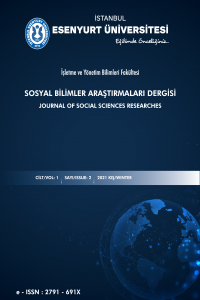NATO’nun Soğuk Savaş Sonrası Yeni Stratejileri
Soğuk Savaşın sona ermesi uluslararası sistemde yaşamsal değişikliklerle birlikte geldi. Bunlardan en önemlileri Sovyetler Birliği’nin dağılması ve Varşova Paktı’nın feshiydi. Sovyet tehdidinin ortadan kalkması ilk etapta NATO’nun geleceğinin sorgulanmasına yol açtı. Ancak müttefikler, yeni jeopolitik ortamda risk ve tehditlerin doğasının değiştiğini, dolayısıyla Transatlantik güvenlik mimarisine ihtiyacın sürdüğünü savundular. Bosna ve Kosova savaşlarına müdahalesi, NATO’nun yeni güvenlik stratejisini ortaya koydu. İttifak savunma rolünün ötesine geçip, Sırp saldırganlığını kuvvet kullanarak bastırdı. 11 Eylül saldırıları Avrupa-Atlantik bölgesinde “güvenliğin bölünmezliği” ilkesini gündeme getirdi. Ardından ABD liderliğinde Afganistan’a karşı gerçekleştirilen askeri harekat, NATO üyelerini “alandışılık” kavramıyla tanıştırdı. Rusya’nın “donmuş anlaşmazlıkları” askeri yöntemlerle çözme arayışı ise NATO’nun stratejilerinde değişikliklere yol açtı. NATO’nun 2010 ve 2022 konseptleri güvenlik ortamını toplu olarak değerlendirerek, ittifakın üç ana görevi olarak caydırıcılığı ve savunmayı; kriz önlemeyi ve yönetimini; ve ortaklaşa güvenliği sıraladı.
Anahtar Kelimeler:
NATO;, Alandışılık;, Güvenliğin bölünmezliği;
NATO’s New Strategies in the Post-Cold War Era
The end of the Cold War marked vital changes in the international system. Above all were the disintegration of the Soviet Union and the dissolution of the Warsaw Pact. As the Soviet threat came to an end, the allies discussed the future of the NATO. However the allies supported the continuation of the Euro-Atlantic security architecture due to the changing nature of the risks and threats in the new geopolitical arena. NATO’s campaigns in the Bosnian and Kosovan wars were the practical results of the alliance’s new security strategy. By using force against Serbian aggression, the alliance went beyond its defensive role. The September 11 terrorist attacks brought the agenda “indivisibility of the security” in the Euro-Atlantic region. Subsequent military campaign by the U.S leadership in Afghanistan introduced the alliace members with “out of area” strategy. NATO’s 2010 and 2022 strategic concepts provided a collective assessment of the security environment and set NATO’s three core tasks: deterrence and defence; crisis prevention and management; and cooperative security.
___
- Bennett, Christopher, “Terörizmle Savaş”, http://www.nato.int/docu/review/2003/issue1/turkish/art2.html (Erişim Tarihi: 17 Mayıs 2005).
- Çakmak, Haydar, Avrupa Güvenliği: NATO, AGİT, AGSP, Ankara, Akçağ, 2003.
- “Declaration on a transformed North Atlantic Alliance issued by the Heads of State and Government participating in the meeting of the North Atlantic Council (The London Declaration)” http://www.nato.int/docu/basictxt/b900706a.htm (Erişim Tarihi: 5 Ekim 2022).
- Eker, Aytaç ve Uğur Kılınç, “Dış Politikada Gelişmeler ve Türk Dış Politika Perspektifleri” Yeni Türkiye, Cumhuriyet Özel Sayısı, Cilt 2, Sayı 23-24 (1998).
- Gözen, Ramazan, Turkey’s Delicate Position Between NATO and ESDP, Ankara, Center for Strategic Research (SAM Papers), 2003.
- John Anderson (Ret’d Admiral), The New NATO, The Defence Associations National Network, Kuzey Atlantik Antlaşması, Washington DC, 4 Nisan 1949, https://www.nato.int/cps/fr/natohq/official_texts_17120.htm?selectedLocale=tr (Erişim Tarihi: 20 Ekim 2022) Lord Robertson, “NATO’nun Dönüşümü”, http://www.nato.int/docu/review/2003/issue1/turkish/art1.html (Erişim Tarihi: 17 Mayıs 2005).
- “Madrid Declaration on Euro-Atlantic Security and Cooperation Issued by the Heads of State and Government”, http://www.nato.int/docu/pr/1997/p97-081e.htm (Erişim Tarihi: 22 Eylül 2022). National Network News, Volume 5 No.1, Spring 1998, www.dann.ca/Backissues/nn5-1_4.html (Erişim Tarihi: 17 Mayıs 2005).
- NATO 2022 Strategic Concept, https://www.nato.int/strategic-concept/ (Erişim Tarihi: 12 Ekim 2022) NATO Office of Information and Press, NATO El Kitabı, http://www.nato.int/docu/other/tr/handbook.pdf (Erişim Tarihi 17 Mayıs 2005).
- NATO Sets Priorities For New Capabilities For Next 15 Years, 29 November 2006, https://www.nato.int/docu/update/2006/11-november/e1129b.htm (Erişim Tarihi: 16 Ekim 2022) Partnership Action Plan against Terrorism”, Prague, 22 November 2002, http://www.nato.int/docu/basictxt/b021122e.htm (Erişim Tarihi: 8 Ekim 2022).
- “Prague Summit Declaration Issued by the Heads of State and Government participating in the meeting of the North Atlantic Council in Prague on 21 November 2002”, http://www.nato.int/docu/pr/2002/p02-127e.htm (Erişim Tarihi: 2 Ekim 2022).
- Strategic Concepts, https://www.nato.int/cps/en/natohq/topics_56626.htm (Erişim Tarihi: 12 Ekim 2022). “The Alliance’s Strategic Concept agreed by the Heads of State and Government participating in the meeting of the North Atlantic Council, ”Rome, 8 November 1991, http://www.nato.int/docu/basictxt/b911108a.htm (Erişim Tarihi: 7 Ekim 2022).
- “The Alliance's Strategic Concept Approved by the Heads of State and Government participating in the meeting of the North Atlantic Council in Washington D.C. on 23rd and 24th April 1999”, http://www.nato.int/docu/pr/1999/p99-065e.htm (Erişim Tarihi 30: Eylül 2022).
- Torumtay, Necip, Değişen Stratejilerin Odağında Türkiye, 2.Baskı, İstanbul, Milliyet Yayınları, 1997. “Washington Summit Communique Issued by the Heads of State and Government participating in the meeting of the North Atlantic Council in Washington, D.C. on 24th April 1999”, http://www.nato.int/docu/pr/1999/p99-064e.htm (Erişim Tarihi: 28 Eylül 2022).
- Yılmaz, Sait, “Ne NATO ile Ne de NATO’suz”, https://www.tarihistan.org/ne-nato-ile-ne-de-natosuz-yazar-prof-dr-sait-yilmaz/16110/ (Erişim Tarihi: 10 Ekim 2022).
- Başlangıç: 2021
- Yayıncı: İstanbul Esenyurt Üniversitesi
Sayıdaki Diğer Makaleler
NATO’nun Soğuk Savaş Sonrası Yeni Stratejileri
Intercultural Communication – Bridges in Understanding Cultural Differences
Pisagor ve Marin Mersenne’in Monchord’larına Müzik ile Matematik Bağlamında Bir Bakış
Esendal GÜLEÇ, Yusuf BAKTIR, İsmail DALAY
Sezai Karakoç’ta Kriz Yaklaşımı ve Nostalji
Nesim ASLAN, Sami YAVUZ, Tekin TEKİN, İlyas EKİN
Bölgesel Kalkınmada Üniversitelerin Rolü: TR3 Bölge Örneği
Güney Kaskasya’daki İstikrarsızlığın ve Çatışmaların Bölgenin Güvenliğine Yansımaları
